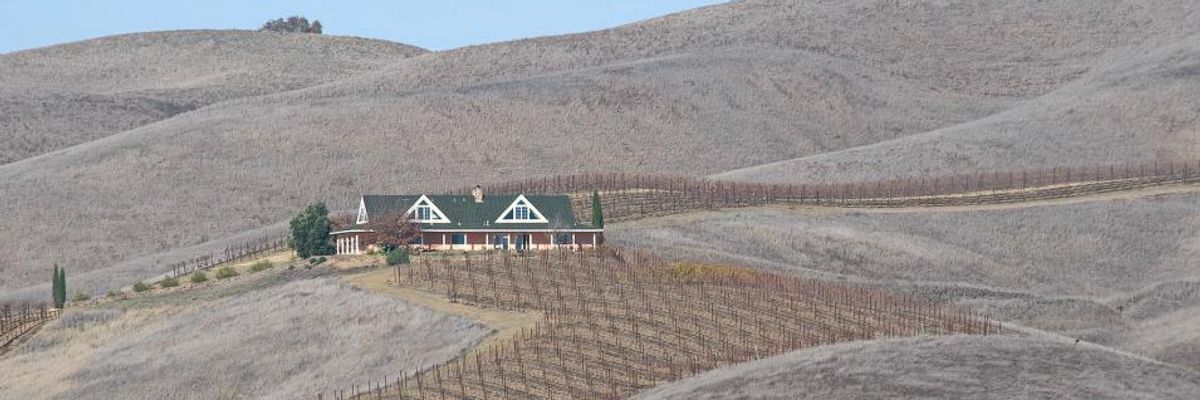Over a dozen California communities now face running out of water within 60 days if urgent steps are not taken, and that list will only grow as the record drought of 2014 continues, according to the State Water Board.
Because of the severity of the crisis, the state has begun tracking communities that face critical water shortages and in the past month alone the number has risen from 8 to 14 towns, according to the list updated late last week.
As of September 23, over 58 percent of the state is experiencing Exceptional Drought, the highest category of drought according to the U.S. Drought Monitor, and roughly 82 percent of the state is under Extreme or Exceptional Drought. According to the survey, over 37 million people are feeling the effects as reservoir levels in the state continue to decline and groundwater wells go dry.
The at-risk locales--including the Big Bend Mobile Home Park in Butte County, Lake Berryessa in Napa, and the Woodside RV Park in Mendocino County--are often small and rural and rely on a single source of water, such as a stream or community well, without backup sources. However, as Tim Quinn, executive director of the Association of California Water Agencies, told the Los Angeles Times, "If this drought keeps on going, some larger, more sophisticated communities are going to be in trouble next year."
At the same time, a study of extreme weather events published in the Bulletin of the American Meteorological Society on Monday said that the conditions contributing to the historic drought in California are "very likely" linked to human-caused climate change.
The 2014 drought has been driven largely by a high-pressure ridge, dubbed the Ridiculously Resilient Ridge or "Triple R" by researchers, that has formed over the Pacific Ocean, blocking storms from delivering rainwater to the West Coast. According to the NOAA-led study, such ridges are much more likely to form in the presence of greenhouse gas emissions.
"California is more likely to see these episodes in the near term," warned environmental scientist Noah Diffenbaugh, who led the study.

